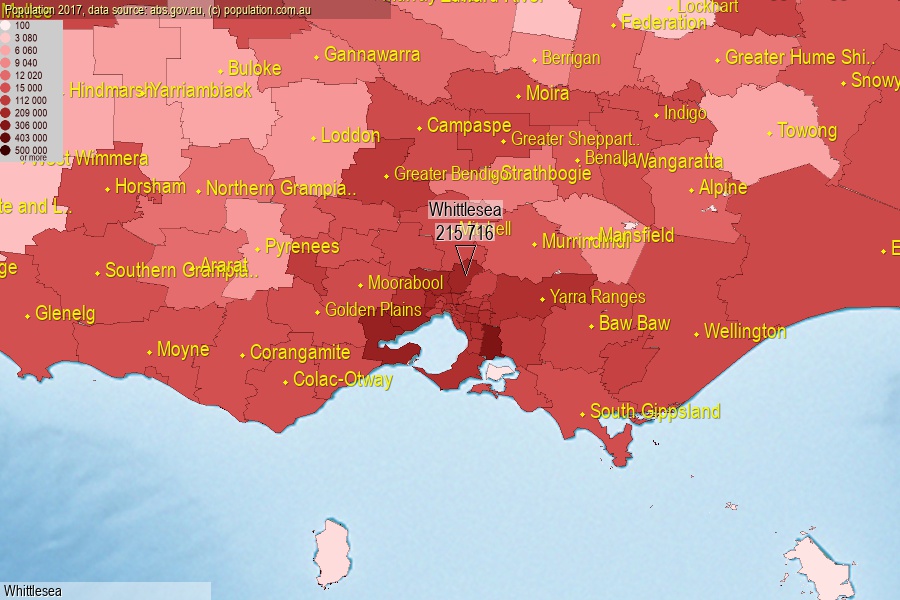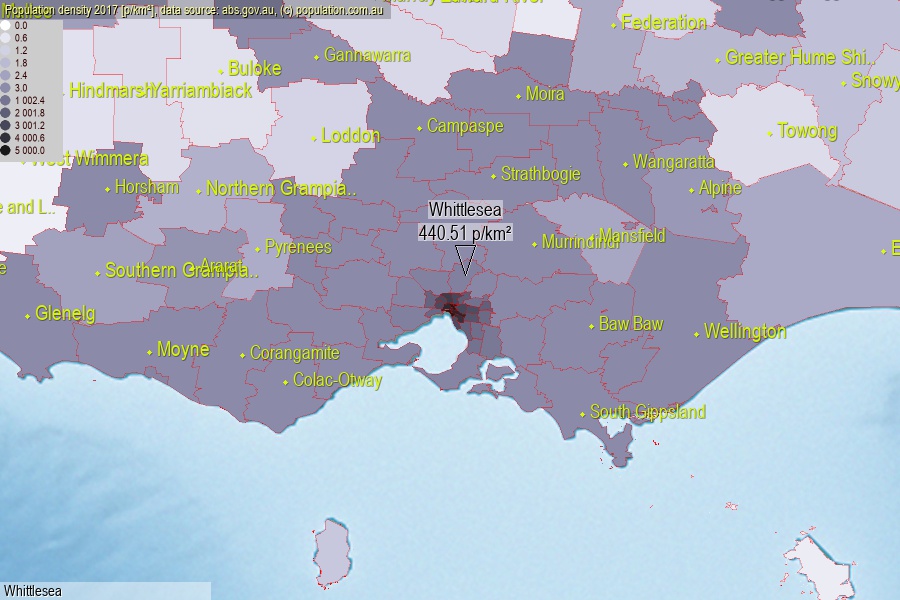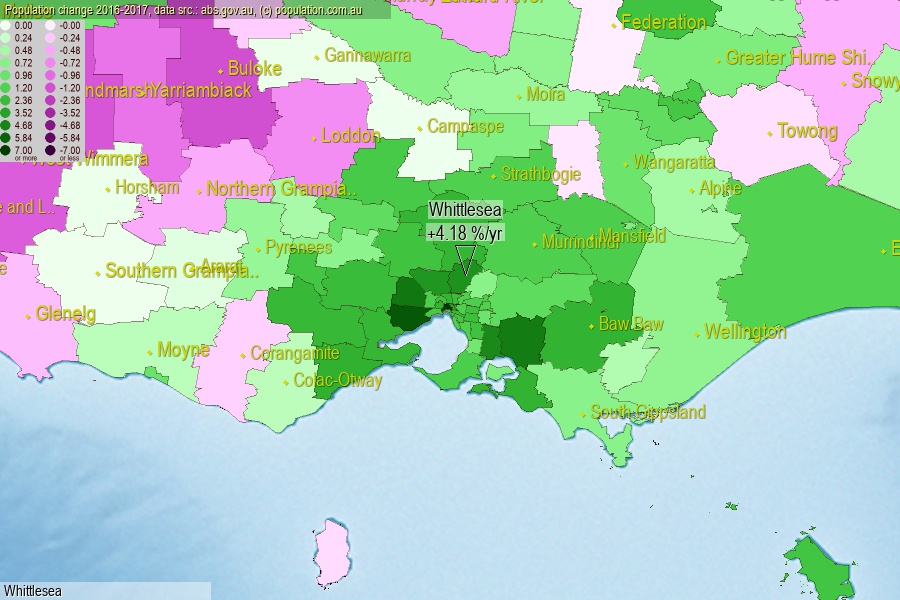 population.com.au
population.com.auLast official estimated population of Whittlesea City (as Local Government Area) was 215 716 people (on 2017-06-30)[2]. This was 0.87% of total Australian population and 3.355% of VIC population. Area of Whittlesea is 489.70 km², in this year population density was 440.51 p/km² . If population growth rate would be same as in period 2016-2017 (+4.18%/yr), Whittlesea population in 2025 would be 299 368. [0]



Click to enlarge. Whittlesea is located in the center of the images.
Population [people], population density [p./km²] and population change [%/year] [2]
[1996-2001] +2.02 %/Y
[2001-2002] +1.91 %/Y
[2002-2003] +2.16 %/Y
[2003-2004] +1.24 %/Y
[2004-2005] +1.74 %/Y
[2005-2006] +2.06 %/Y
[2006-2007] +3.46 %/Y
[2007-2008] +4.14 %/Y
[2008-2009] +5.06 %/Y
[2009-2010] +4.99 %/Y
[2010-2011] +5.30 %/Y
[2011-2012] +5.72 %/Y
[2012-2013] +5.46 %/Y
[2013-2014] +4.81 %/Y
[2014-2015] +4.76 %/Y
[2015-2016] +5.19 %/Y
[2016-2017] +4.18 %/Y
[0] Calculated with linear interpolation from officially estimated population
[1] Read more about LGA and Australian Statistical Geography Standard (ASGS) on abs.gov.au
[2] Population data from Australian Bureau of Statistics (Population and density: 2017; change: 2016-2017)
[3] Digital Boundaries: Australian Statistical Geography Standard (ASGS) 2016.